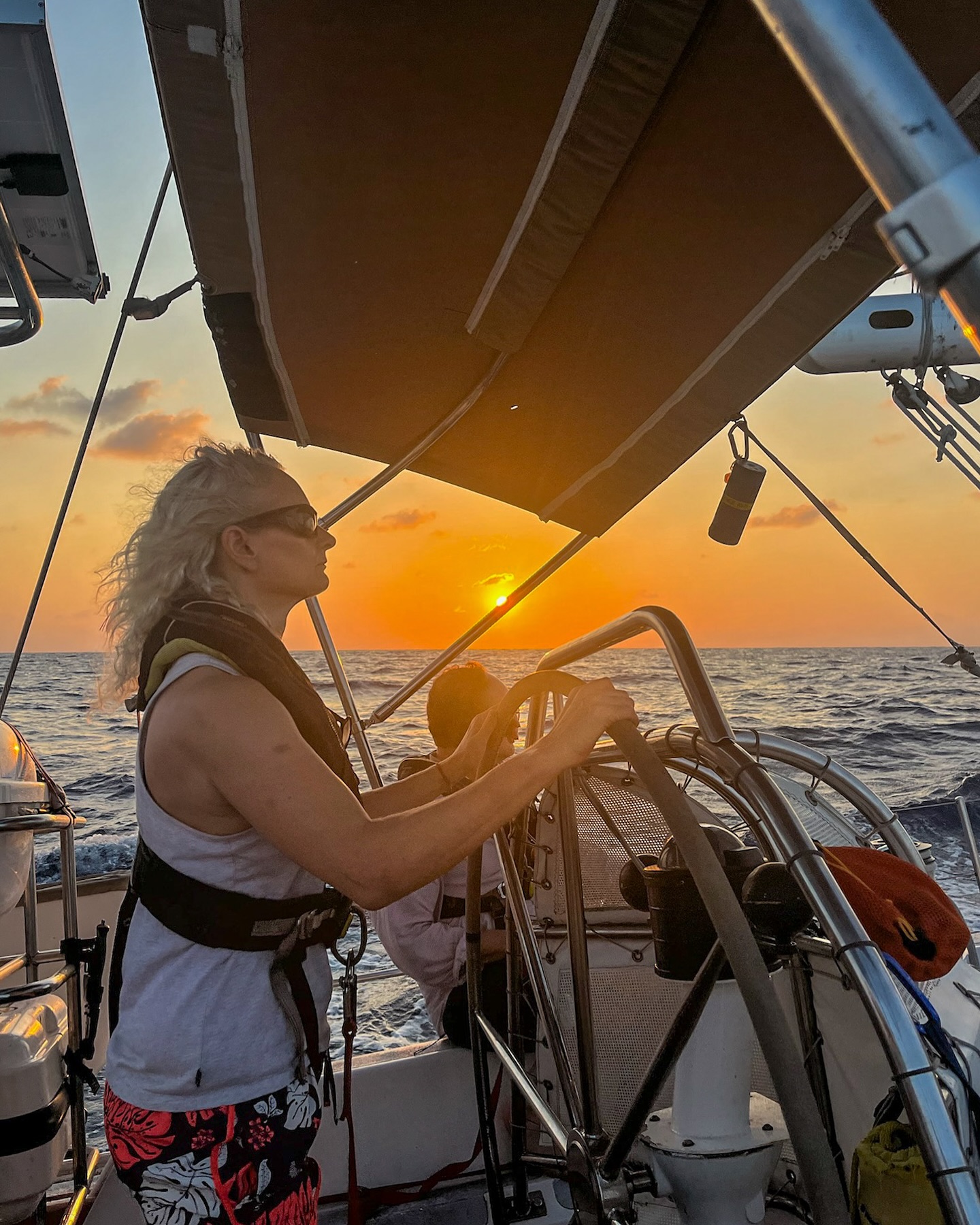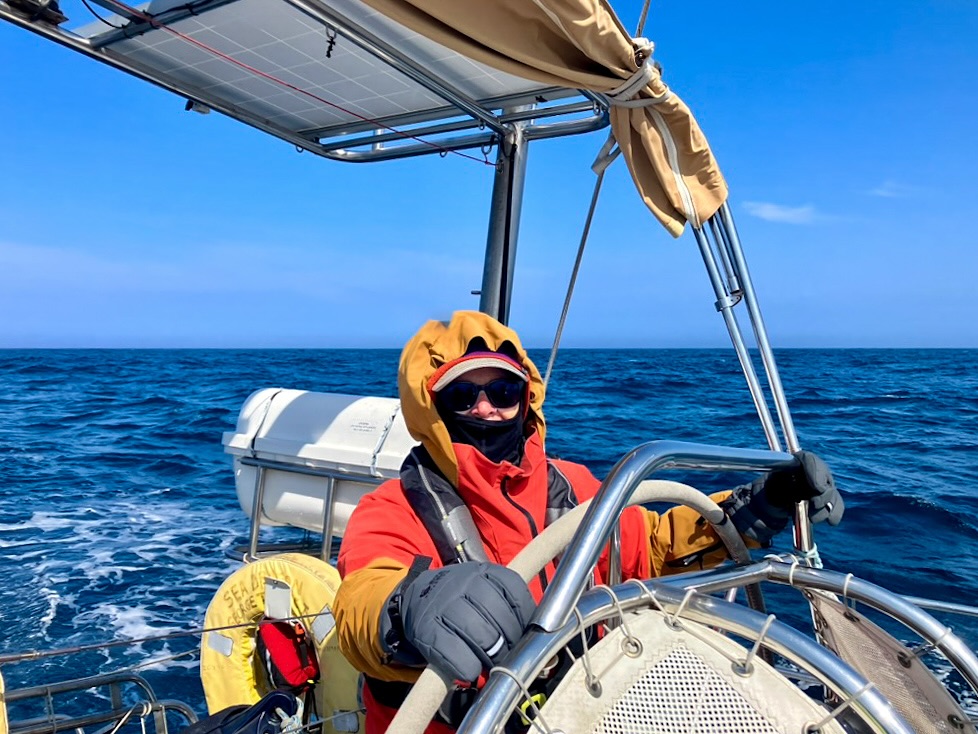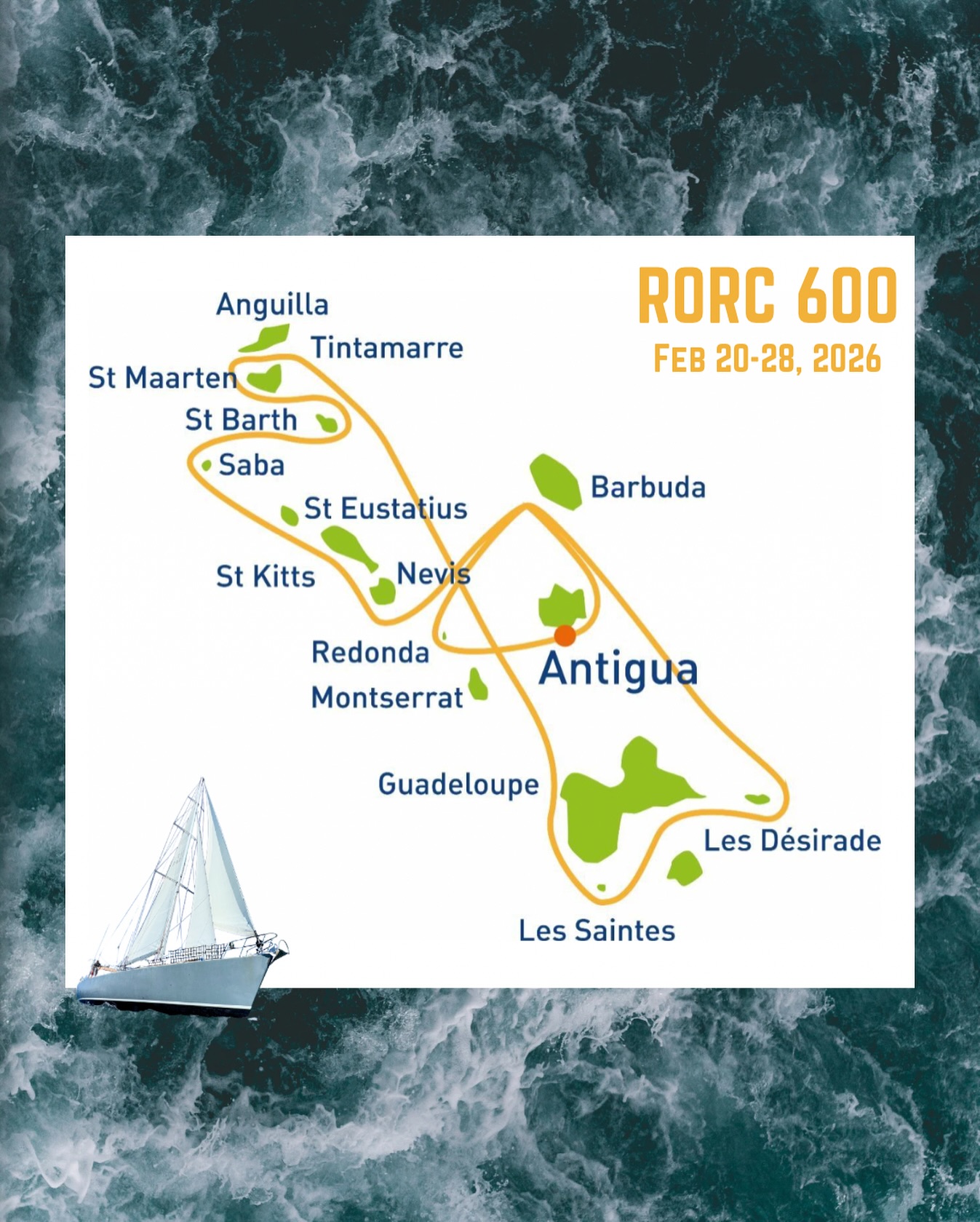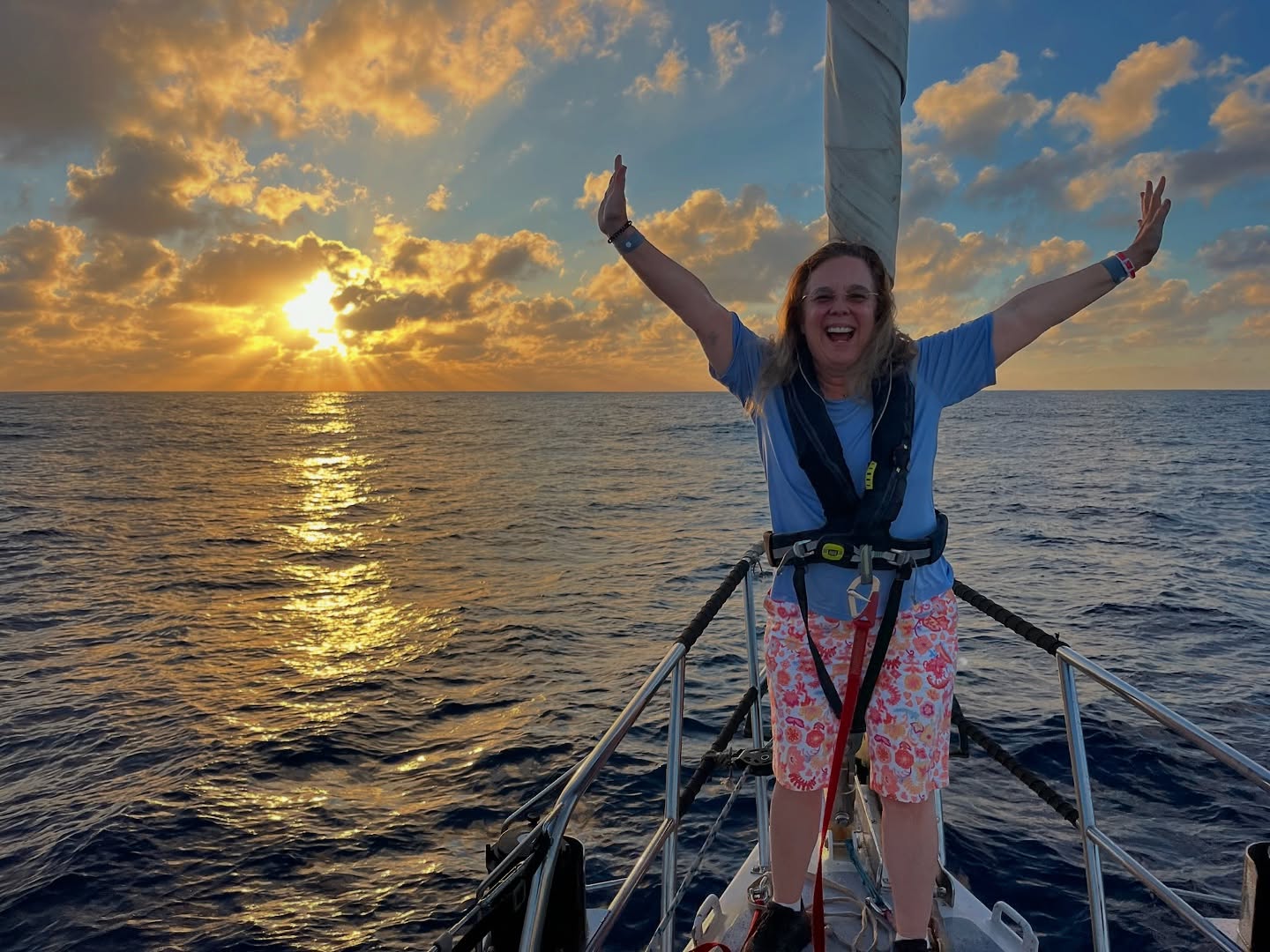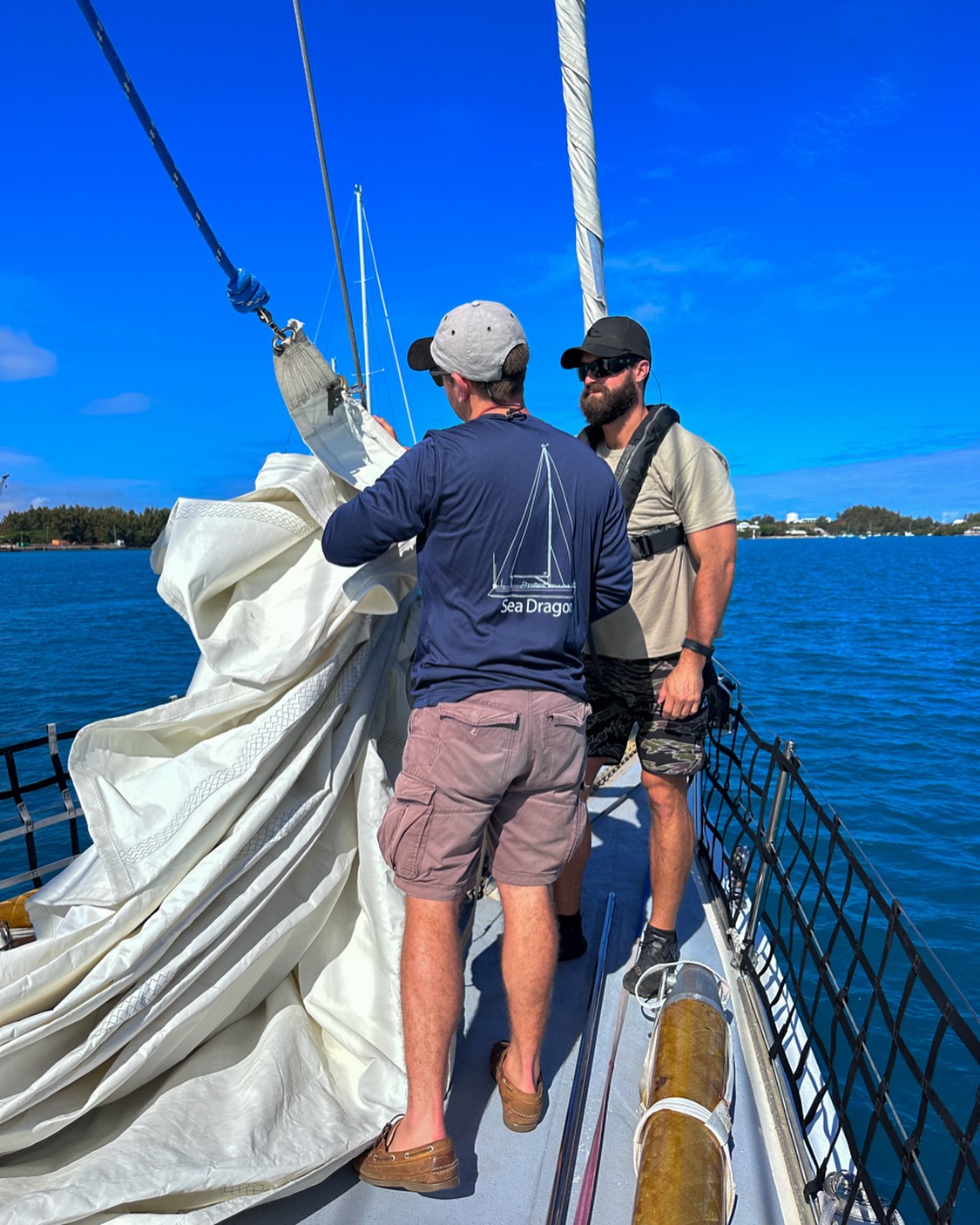While a question like “What do you do?” would be easily answered by most, as a scientist it’s often difficult to put into words all the things that one might “do” during a regular day, let alone a day in the field.
So we’ll take you on tour of our last few days aboard the Sea Dragon, to give you a better and hopefully more interesting story than the 10 second elevator speech you’d be getting during that networking reception.
As the sun begins to stream through the porthole windows above our bunks, we awaken to the smell of breakfast being prepared in the galley (that’s ship-speak for kitchen). We huddle around the saloon and begin to organize ourselves for the day’s work as we eat. Checking weather conditions, we ensure that the plan we agreed upon the previous night can still be carried out. Today, we’re going to scope out one, hopefully two, new locations to see if we can find corals big enough to drill. With clear skies and lovely breeze, we finish up our breakfast, some delicious scrambled eggs, and quickly gather the necessary gear for the morning’s trip: wetsuits, snorkel gear, dive gear, and of course, our precious drills. We set off from the Sea Dragon and head to Hans Lollik, a small Island near St. Thomas. Arriving on location, we jump right in; the four of us spread out in search of massive corals. Below us lies a vast expanse of vibrant coral, sea fans, and unfortunately many dead coral. The Caribbean has suffered several widespread losses of corals over the last few decades. For instance, Acropora palmata, which used to be the major species in the Caribbean, was nearly driven to extinction by white-band disease, an infection that spread quickly through the entire Caribbean. During our dives we’ve seen the remains of many of these Acropora palmata colonies. Though they retain their characteristic shape, they mostly look like weathered rocks and are often covered in algae, or more promisingly, by tiny juvenile corals that have chosen the coral rubble as their new home.
After several minutes of swimming, I spot what we’re looking for. I’ve found a large colony of Diploria strigosa commonly called brain coral due to its windy rugged appearance and growth pattern. “Jackpot!” I yell out to my colleagues and the boat tender, who brings over our dinghy with supplies. We swap our snorkels for scuba tanks and begin to drill. While two of us work on getting the core, the other two continue on coral scouting duties. Before lunch, we’ve successfully drilled two cores and are feeling pretty accomplished.
We head back aboard Sea Dragon for a quick recharge (of both our scuba tanks and growling stomachs) and prepare to head to the second new site of the day: Fish Bay, near St. John. Since this is a new site we again begin our exploration on snorkel, to avoid unnecessary hassle with our gear until we’re sure we need it. This time our search takes no time at all; we’re surrounded by gigantic boulders of coral. Up to now we had been using our smaller pneumatic drills, which run off scuba tanks. These colonies merit a little more power; we’re going to need our large hydraulic drill. We prepare the big guns and get positioned to drill our core. It all begins smoothly enough, our first near meter long piece comes out quickly and the second follows suit. As we begin to core the third segment our drill gets stuck deep in the coral. It’s jammed… so now what?
This part of science is exactly what makes it so difficult to answer that seemingly benign “what do you do?” question, because on any given day we might go from being coral researchers, to scuba divers, to hydraulic drill technicians starring as King Arthur in the Core in the Stone. We attempt all sorts of maneuvers to try to budge our drill bit from the coral core hole, probably looking quite like all the others that tried their hand at Excalibur. In the end, we manage to release one part, but one of our bits is still stuck. As the day is drawing to an end, we’ll have to head back to our home away from home for now and will finish the job tomorrow. Our ride back to Sea Dragon rewards us with a stunning sunset, and as we gather around the dinner table, we again begin to plan our next day. Once that’s done, the nighttime is reserved for stargazing and blog writing.
Tomorrow a whole new adventure awaits.
Written by: Hanny Rivera













